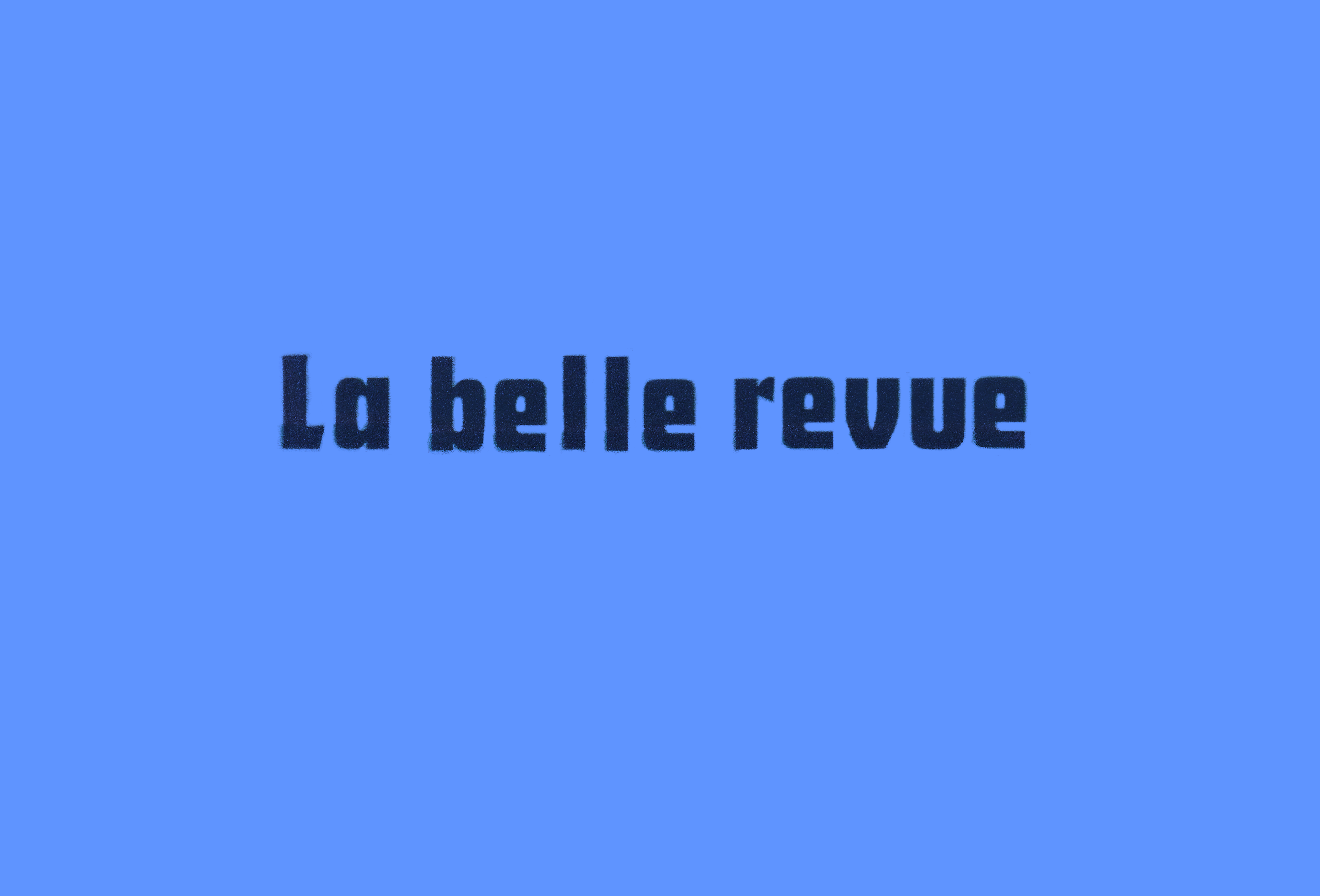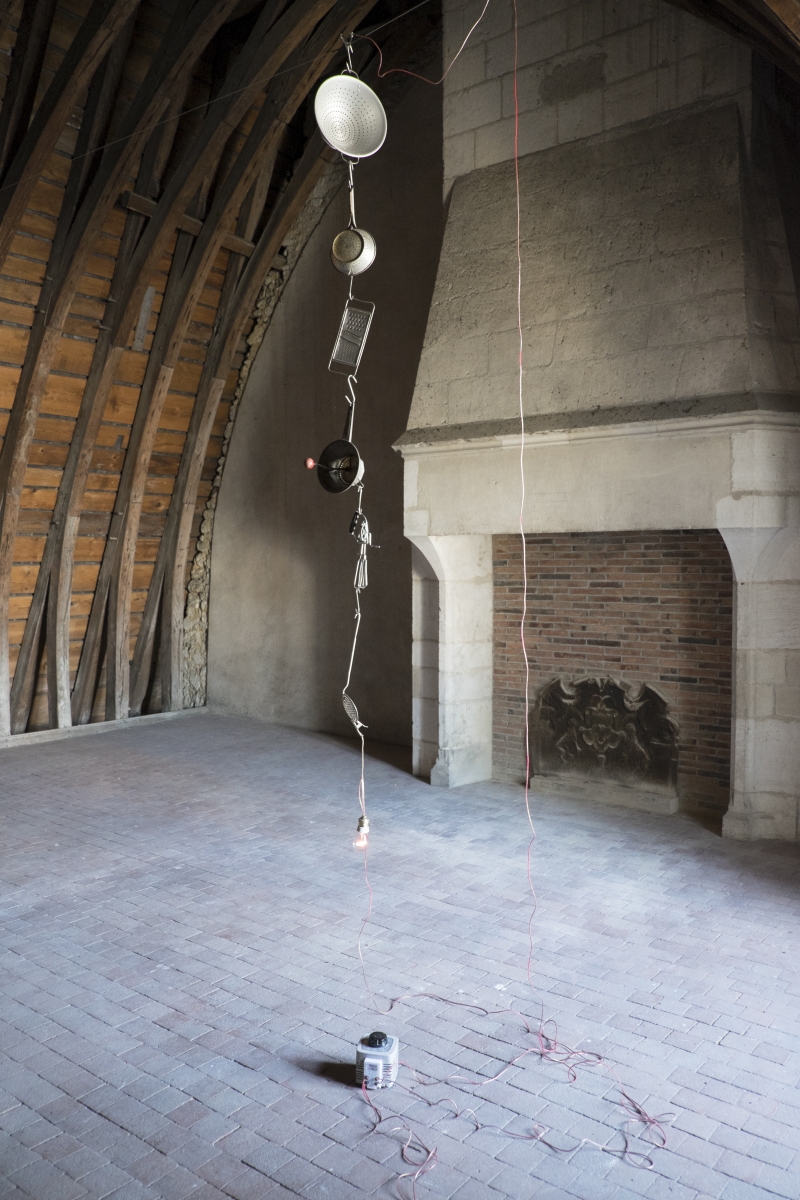Genre Humain [Human Genre], a musical track and the visual of the invitation, enumerating the list of 32 guest artists, already lays our cards on the table. But what "genre" of exhibition are we mounting here, in Bourges, in the Palais Jacques Cœur, architecture in late-Gothic style that was designed with a surprising concern for comfort? Claude Lévêque as master of ceremonies warns us from the outset that he is not an exhibition or museum curator. He was invited by the Emmetrop association (whose excellence no longer needs introduction) to create an event for the 30th anniversary of its existence. It was an artist’s freedom that guided this exhibition, convoking both historical artists of contemporary art, such as Chris Burden, who recently passed away, Joseph Beuys, and David Hammons (Money, 1989-1993), to name but a few, along with younger artists, some of whom have only recently been discovered – we’re thinking of the wonderful destiny of Jérôme Zonder (Pierre-François et le chat qui rit), and of the little photo by Simon Boudvin. The goal was not to do anything spectacular or to nurse relations with the galleries and museums, but to inhabit a place that was foreign to the world of these artworks, just to see. No picture rails, no official hanging... the problematics were focused elsewhere than on the decor, or else playing on it with finesse, humour and brio, as Carlos Kusnir has done (Kusnir, 2015). How could this historic monument be made to resonate while avoiding the pitfalls of some kind of terrible national photo novel?
Lévêque’s selection was geared towards works stemming from radical approaches, but ones that do not add layers of superfluous references and quotes. Genre Humain is therefore intended as a game with this venue that is full of stories. In this way, the work of Beuys – master of grand ceremonies and gigantic installations – is here a simple confrontation between a lemon and a yellow bulb atop a socket. In order to inhabit the space, Lévêque and the Emmetrop team insisted on placing the artworks without necessarily hanging them. The Capry Battery (1985, bulb, socket, lemon) is almost hidden in a niche of the office pantry. The thundering sculpture by Gerome Nox (Drone #1.0) easily spills over from the chapel and into the city. Crossing the monumental rooms, ascending the staircases, filing through spaces, arriving in the tower, and descending – each space installs a new situation, a presence.
Annette Messager invites us, Come (2005) – writing with plush toys on the wall – opposite a work in which Haim Steinbach plays on a display exploding the limits between base, sculpture, and shelf using objects derived from a cartoon world. Then there are the little people by Françoise Pétrovitch in frames placed on top of chests. But this does not include other hallucinations such as Ugo Rondinone’s Rising ritual rest (2008) in the ceremonial room, an illusion in the form of a huge solid-wood door ready to open onto the dead of night, with various ghosts to make children scream. This circuit places confidence in the artworks, which know how to invest the space very well.
The idea, then, is to create tensions. For instance, between the mural tapestry, recumbent figures and ghosts of the insurgents of May 1848; two monitors present the mass for a body (1969, reactivation in 1975) by Michel Journiac, placed in the window-frames, while a structure consisting of intertwining fluorescent lights, the archetype of a tent inhabited by a taxidermied fox, occupies the central territory. For the occasion, part of the attic area of the castle has been opened. Childlike masks expressing the epitome of fear, interpreted by Laurent Faulon in resin; an entropic archaeology of Constancin; the ambivalent Electrified II (2010) by Mona Hatoum – all of these artists question the world, derived from the personal notebooks of Claude Lévêque and found through a determined treasure hunt.
From the basement to the attic, everything has been explored. This is how Lévêque himself fell for the first of the three basement levels. At the express request of Emmetrop, Chiens de diamants [Diamond dogs] was born, a stroll amid the darkness of lapidary deposits and flashes of light orchestrated by teaspoons lit up like so many quavering little candles under the ostinato of castanets rising from the well-lit space, behind a door left ajar.






